Livio De Simone spinto dalla famiglia alla laurea in legge e alla cura dei possedimenti paterni, non ha amato né la legge né la campagna, quanto invece ha ammirato, nella sua vita, i colori. Fin da giovanissimo ha una forte attrazione per l’arte. Lo ritroviamo difatti, nel 1954, al fianco di artisti napoletani del Movimento Arte Concreta come Barisani, Tatafiore, Venditti e De Fusco, nella mostra alla galleria d’arte Medea di Napoli, dove grafica, scultura e pittura su stoffa si fondono in un’unica opera globale senza soluzione di continuità in una “sintesi delle arti”, come Renato De Fusco delinea nel manifesto Perché arte concreta. Ma questa sarà l’ultima partecipazione di Livio ad una collettiva. Ben presto riprende la sua ricerca personale di progetto totale che riguarderà stoffe, abiti, oggetti, profumi e un intero life style “Livio De Simone”. “Sono un pittore, non un sarto”, diceva, e così, ignorando le logiche dello stilismo e della produzione industriale, portava con coerenza il proprio “genio pittorico” sul tessuto, sulle irregolarità dei tratti, eludendo i vincoli della complessità del taglio sartoriale. Usava spazzole, spugne e pennelli per creare tessuti indossabili sui quali veniva resa, con “tutti i colori possibili”, la tradizione iconica mediterranea così formalmente ricca di ispirazioni e da cui l’artista ha continuamente attinto.
Nel momento di maggior boom economico per l’Italia, proprio in quel magico periodo in cui a Firenze nasce il Made in Italy, comincia quasi per gioco a far stampare tessuti e a confezionare cravatte per sé e per gli amici, entrando così a far parte anch’egli di quel “fenomenale” gruppo di creativi-stilisti che per primi contribuirono a richiamare in Italia i buyer internazionali che diffonderanno i nostri marchi nei grandi “stores” internazionali.
È nel 1950 che De Simone inizia ad avviare la professione di pittore decoratore di “batique napoletani”, con una produzione iniziale di trenta metri di popeline giornalieri e con
un costo della materia grezza di 210 lire al metro che viene venduta decorata dal maestro a 2000 lire.
Comincia la sua produzione di tessuti per la moda disegnandone alcuni per Emilio Pucci, e successivamente firma una collezione a suo nome nel 1958. Dal 1962 si avvale nella creazione, nella ricerca e nella direzione della ditta, dell’instancabile opera della bellissima moglie Graziella, trasformando rapidamente la ditta individuale in un laboratorio industriale, creando e registrando il marchio in Italia e all’estero. Nel 1957 sfila per la prima volta con le sue creazioni a Palazzo Pitti, vendendo i suoi prodotti, da quel momento in poi, nelle più prestigiose boutique internazionali.
Così il maestro del colore diventa uno dei creatori di moda partenopei più richiesti all’estero; lo scenario più esclusivo per tale incredibile successo è Capri, che rappresenta il palcoscenico ideale per la vendita delle sue creazioni. Tra le sue clienti più illustri Ingrid Bergman, Audrey Hepburn, Yvonne De Carlo, Jacqueline Kennedy Onassis, Lana Turner, Elsa Martinelli, Lucia Bosè, Sandra Mondaini, Barbara Bouchet. Un successo tutto italiano, anzi “napoletano”, che sposa la bellezza dei luoghi mediterranei con la creatività di un artista sempre al centro dei riflettori e continuamente fotografato con le più belle attrici dell’epoca durante importanti eventi mondani di “MareModa Capri”, che portò a Capri, per un decennio, i più importanti talenti della moda italiana.
Nel tempo la sua produzione si è sempre più specializzata, passando dai variopinti total look alla linea di tessuti e prodotti per l’interior design LIVIO DE SIMONE I.D. Il suo genere di tessuto è diventato caratteristico come quello del batique, ma il processo “artistico-industriale” che è alla base della produzione ha richiesto un livello di invenzioni tecniche del tutto sperimentali, sia per poter realizzare i disegni che sognava, sia per la riproduzione dei variopinti fondi marini, delle spiagge e degli scogli di Capri, isola che per De Simone rappresenta la concretizzazione del mito. Questi tessuti tipicamente mediterranei, sembrano possedere il colore dei suoi mari cristallini e hanno conosciuto nel tempo un successo notevole sia nei mercati italiani che esteri.
Ben presto approfondisce nuovi ambiti di ricerca, estendendo il suo marchio oltre che all’interior design, alla produzione di una linea maschile di profumi – il trasgressivo profumo LSD anagrammando le sue iniziali – , di accessori e persino di gastronomia, per la quale crea uno speciale packaging per valorizzare le salse mediterranee da lui ideate; un vulcano creativo, insomma, quasi che “Livio De Simone avesse comprato il suo nome” per creare continuamente nuovi prodotti nel suo stile, come afferma Adriana Mulassano in un’intervista fatta all’artista. In breve tempo Livio De Simone apre propri punti vendita LIVIO DE SIMONE ORIGINALS nella piazzetta di Capri, a Napoli, a Roma e infine nei luoghi cult di Park Avenue, New York.
Analizzando la sua vasta produzione di disegni, grafici e fantasie multicolori, sapientemente utilizzati per i famosi chemisiers tanto in voga tra la fine degli anni ‘60 e ‘70, è possibile cogliere due differenti fattori che rendono unica l’arte della pittura su stoffa di Livio De Simone: l’appartenenza all’enclave culturale mediterranea e il carattere di sperimentalità continua del suo laboratorio creativo.
La sua opera è caratterizzata dall’estrema riconoscibilità di segni, forme e colori tipici delle culture del nostro Mediterraneo e ciò è particolarmente visibile nella reinterpretazione delle sue “greche” che sembrano far rivivere le mitiche menadi danzanti dei crateri a “figure rosse”, ritrovate in grande quantità nelle tombe della Magna Grecia. L’idea che l’opera di Livio sia strettamente legata all’ambito culturale del Mediterraneo si concretizza nella filosofia di estensione del marchio alla linea LIVIO DE SIMONE I.D., che non a caso pubblicizza yacht e panfili a vela come lo Ziggurat, esportando un modello del tutto Made in Capri. Livio De Simone scorge infatti la possibilità di “decorare” gli interni dei panfili di lusso con i suoi tessuti multicolori, immaginando sempre nuove tipologie di prodotti anche per gli esterni. Sue sono le sperimentazioni di tessuti impermeabili da adottare anche per i cuscini prendisole di poppa o per i cuscini a doppia faccia ed innumerevoli altre creazioni.
Decisiva è la creazione di uno straordinario laboratorio che sperimenta un universo di tecniche e metodologie semi-artigianali/industriali per il trasferimento delle sue creazioni dalla carta alla stoffa. Questo laboratorio, nel tempo, si tramuta nell’officina di produzione di tessuti della Maison LIVIO DE SIMONE dove ancora oggi si riproducono fedelmente disegni originali di Livio stesso, o nuove fantasie disegnate dalla poliedrica figlia Benedetta, oggi Art Director della Maison.
Le tecniche di lavorazione adoperate tuttora sono “miste” ed affiancano la tecnica “a mano libera”, che permette un uso di colori e forme sempre e continuamente irregolari, ai tradizionali quadri di stampa, usati, però, non convenzionalmente “a rapporto”, ma con sovrapposizioni ed interventi all’interno degli stessi, generando interessanti effetti “misti” di arte pittorica a mano e di tecnica serigrafica anche se, nelle ultime collezioni create dalla figlia Benedetta, la produzione totalmente decorata a mano è quella più utilizzata.
In questo processo a metà tra arte e moda, artigianato e industria, contrariamente a quanto si possa credere, nulla è lasciato al caso, tutte le forme sono perfettamente studiate in un binomio di fantasia e tecniche di produzione che creano una casa di moda unica nel suo genere nel panorama del sistema moda italiano.
«Se i colori avessero voce, avrebbero per me il suono inconfondibile della risata contagiosa di Livio De Simone, le sue vibrazioni positive», questo riportava Mariuccia Mandelli, in arte Krizia, in un’intervista fatta durante la mostra il “Mediterraneo di stoffa” curata nel 2005 da Patrizia Ranzo, Elena Perrella e Roberto Liberti a Napoli, che diede preziosi input per un rinnovo di immagine della Maison perennemente in linea con i tempi e che oggi è nelle sapienti mani di Benedetta De Simone che ha raccolto questa importante eredità di family brand totalmente Made in Italy.
Livio De Simone, encouraged by his family towards a law degree and the care of the paternal possessions, has never loved law or the countryside as much as he admired, in his life, colors. From an early age he has a powerful attraction for art. We find him, indeed, in 1954, together with the Neapolitan artists of the Movimento Arte Concreta such as Barisani, Tatafiore, Venditti and De Fusco, in the exhibition for the Medea art gallery in Naples, where graphic design, sculpture and fabric painting merge in a single, global, seamless piece in a “synthesis of the arts”, as Renato De Fusco describes in his manifesto Perché arte concreta. However, this will be the last participation of Livio in a collective exhibition. Before long he continues his personal research on a total project involving fabrics, clothes, object, perfumes and an entire “Livio De Simone” lifestyle. “I am a painter, not a tailor”, he said, and so, ignoring the logics of fashion design and industrial productions, he coherently puts his “pictorial genius” on the fabric, on the irregularities of the traits, avoiding the restrictions of the tailor cuts. He used brushes, sponges and brushes to create wearable fabrics where he conveyed with “all the possible colors” the iconic Mediterranean tradition so formally rich in inspirations and from which the artist has continuously gleaned.
At the time of the greatest economic boom for Italy, in that magic period where the Made in Italy was born in Florence, he begins, almost for fun, printing fabrics and creating neckties for himself and his friends, joining that “phenomenal” group of creators-artists who first contributed to drawing in Italy the international buyers who would later spread our brand in the main international stores.
In 1950 De Simone begins his career as a decorator painter of “Neapolitan batique” with an initial daily production of 30 meters of poplin and a cost of the raw materials of 210 lire for meter, which is sold, decorated by the master, for 2000 lire.
He begins his fabric production for the fashion industry designing for Emilio Pucci and, later, he creates a collection under his name in 1958. Since 1962 he is supported in the creation and research process and in the management of the firm, by the tireless work of his beautiful wife Graziella, radically turning the individual business into an industrial laboratory, creating and registering the brand in Italy and abroad. In 1957 his creations are featured in a runway show in Palazzo Pitti, selling his product, from that moment on, in the most prestigious international boutiques.
Thus, the master of colors becomes one of the more requested creators of Neapolitan fashion abroad; the most exclusive scenario for such an incredible success is Capri, which represent the perfect stage for the sale of his creations. Among his most illustrious customers Ingrid Bergman, Audrey Hepburn, Yvonne De Carlo, Jacqueline Kennedy Onassis, Lana Turner, Elsa Martinelli, Lucia Bosè, Sandra Mondaini, Barbara Bouchet. An Italian, or rather, a “Neapolitan” success, marrying the beauty of the Mediterranean landscapes with the creativity of an artist always under the spotlights and continuously seen together with the most beautiful actress of the time during important social events of “MareModa Capri”, that for a decade as brought to Capri the most important talents of Italian fashion.
In time, his production has specialized, ranging from colorful total looks to the line of fabrics and interior design products LIVIO DE SIMONE I.D. His style of fabrics has become characteristic like the batique, but the “artistic-industrial” process at the core of his productions has required a level of experimental and technological inventions, both for realizing the designs he dreamed and replicating the colorful sea floors, beaches and rocks of Capri, an island that, for De Simone, represents the realization of the myth. This typically Mediterranean fabrics seem to possess the color of its clear waters and have gained in time a considerable success in both Italian and foreign markets.
Before long, he delves into new fields of research, extending his brand other than interior design, to the production of a men’s line of perfumes – the transgressive fragrance LSD, anagram of his initials, – accessories and even cuisine, creating a special packaging to enhance the Mediterranean sauces of his invention; a creative volcano, almost as if “Livio De Simone bought his name” to continuously create new products in his style, as stated by Adriana Mulassano in an interview with the artist. In a short time Livio De Simone opens his own retail stores LIVIO DE SIMONE ORIGINALS in Capri’s Piazzetta, in Naples, Rome and finally in the cult location of Park Avenue, New York.
Examining his vast production of drawings, designs and multicolor fantasies, masterfully used for the famous chemisiers in vogue between the 1960s and the 1970s, it is possible to grasp two different features that make Livio De Simone’s art unique: the affinity with the Mediterranean cultural enclave and the nature of continuous experimentation of his creative laboratory.
His work is characterized by the extreme recognition of signs, shapes and colors typical of our Mediterranean cultures and this is particularly evident in the reinterpretation of his “Greek frets” that seem to revive the mythical dancing maenads of the “red figures” craters, found in the tombs of Magna Grecia. The idea that Livio’s work is closely tied to the Mediterranean cultural heritage materializes in the philosophy of extending the brand to the LIVIO DE SIMONE I.D. line, that not by chance advertises sailing boats and yachts such as the Ziggurat, exporting a completely new model of Made in Capri. Indeed, Livio de Simone glimpses the possibility of “decorating” the interiors of the luxury yachts with his multicolor fabrics, always imagining new types of products for external uses as well. His experimentations include water-proof fabrics for sundress pillows, or for double-sided pillow and uncountable other creations.
His is the decisive choice of creating an extraordinary laboratory where to experiment a universe of semi-artisanal/industrial techniques and methods for transferring his creation from paper to fabric. This laboratory, in time, transforms into the workshop for the production of fabrics of the LIVIO DE SIMONE Maison where even today Livio’s original drawings are faithfully reproduced, together with the new fantasies designed by her versatile daughter Benedetta, current Art Director of the Maison.
The working techniques employed today are “mixed” and they accompany the “freehand” technique, allowing a continually uneven use of colors and shapes to the traditional frameworks, used not in a conventional “rapport”, but with overexposures and interventions in the inside, creating interesting “mixed” effects of handmade pictorial art and serigraphic techniques even if, in the last collections created by Benedetta, the most employed production is the one completely decorated by hand.
“If colors had a voice, for me they would have the unmistakable sound of the infectious laugh of Livio De Simone, its positive vibrations”, these are the words of Mariuccia Mandelli, stage name Krizia, in an interview done during the “Mediterraneo di stoffa” exposition curated in 2005 by Patrizia Ranzo, Elena Perrella and Roberto Liberti in Naples, which gave precious inputs for the image renewal of the Maison perpetually up to date with the times and that today is in the capable hands of Benedetta De Simone, who has accepted the important legacy of a family brand, completely Made in Italy.


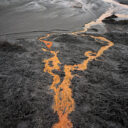
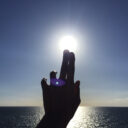

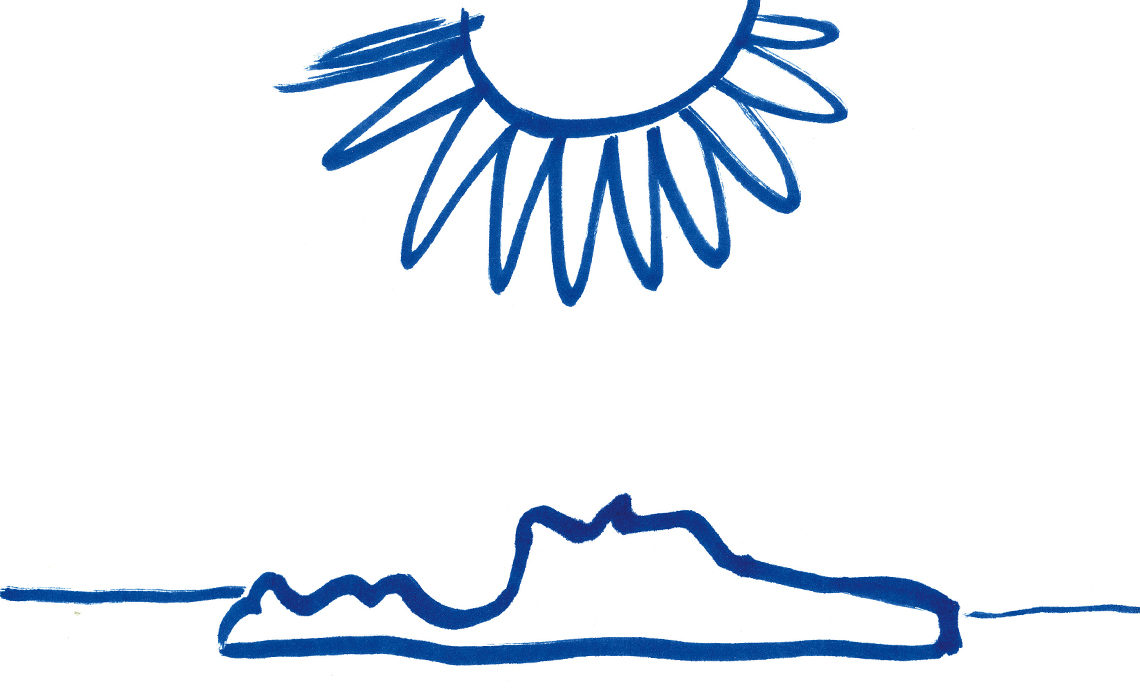
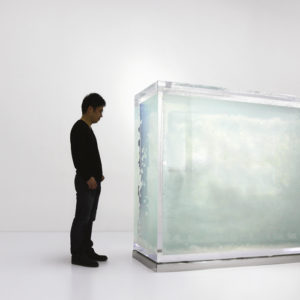
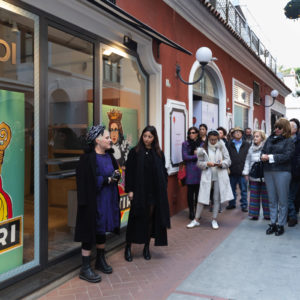
No Comments